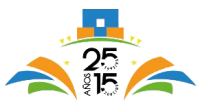Investigation of the accuracy of a low-cost, portable, auto-refractor to provide well-tolerated eyeglass prescriptions

| AUTHORS | |
| JOURNAL | Investigative Ophthalmology & Visual Science June 2020, Vol.61, (ARVO 2020) |
|
Purpose : In low-resource settings with large burden of uncorrected refractive errors, auto-refractors are conventionally considered too expensive and inaccurate to significantly improve refractive eye care. We compared patient acceptance of eyeglasses prescribed using a low-cost, portable auto-refractor (the QuickSee) with that of eyeglasses prescribed via standard subjective refraction. We also compared the accuracy of the QuickSee refraction measurements with subjective refraction performed by trained technicians at Aravind Eye Hospital (AEH), India.
Methods : Patients aged 18-40 years presenting with refractive errors to the general ophthalmology clinic at AEH who had not had a new pair of glasses in the previous 2 years were included in this randomized controlled clinical trial. Study participants underwent subjective refraction (SR) followed by QuickSee refraction (QR). An independent optician prepared eyeglasses based on each refraction approach. Participants were randomly assigned to use either the SR or QR-based eyeglasses first, followed by the other pair, and requested to wear each pair for a week. At the end of each week, participants answered a questionnaire on satisfaction with the eyeglasses. At the second follow-up visit participants were asked about their eyeglasses’ preference. Pearson coefficients (r) and Bland-Altman plots were used to analyze the correlation and agreement between SR and QR measurements. Results : A total of 400 patients were enrolled in the study with mean (SD) age of 28.6 (6.5) years and 68.1% were women. There was a strong correlation between the two refractions (r=0.97 (p<0.001) with a mean difference of 0.08 (95% limits of agreement: -0.85 to 0.70). Of the 301 patients (75.3%) who completed both the follow-up visits, 50.7% and 49.3% preferred glasses prescribed using SR and QR, respectively (p > 0.05). Conclusions : We observed strong agreement between the prescriptions from SR and QR. Almost half the patients preferred glasses prescribed using QR only. This confirms the quality and effectiveness of QuickSee in prescribing accurate eyeglasses for refractive error corrections. Given the portable form factor, short measurement time, low cost and minimal training required to use the device, the QuickSee could be considered for use in eyeglass distribution programs.
|
|
| LINK | here |



